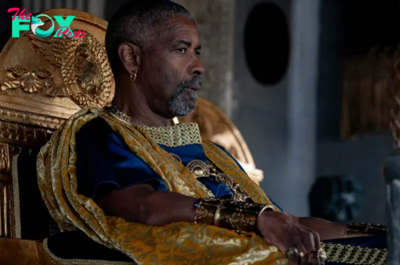Entertainment
It’s Time to Talk About the Oscar for Best Costumes
There are costumes whose details you can conjure in a heartbeat—Marilyn’s billowing white seashell of a dress, the moss-velvet gown Scarlett O’Hara fashioned from Tara’s drapes, Dorothy’s incongruously perfect pinafore-and-ruby-slipper mashup—and those that work more subtly, everyday-looking clothes that nevertheless help an actor think and move as they bring a character to life. It’s the flashier projects that are usually honored with Academy Award nominations—that’s just the way it goes. But all costumes, showstoppers or not, are integral to the power of movies. They’re the layer of meaning closest to the actor’s skin—the energy they conduct is an unspoken language. There are moviegoers who think about costumes all the time and those who take notice of them only when they’re especially dazzling. But Oscar time is the best opportunity to dig more deeply into the art and craft of costume design, and the 2023 movies nominated in this category, particularly rich and varied, present an especially intricate passementerie knot. Is there any way to objectively choose the best?
The answer is no, only because tastes in costumes—like taste in movies—is anything but objective, as individual as a fingerprint. But it’s possible to look at the designs for each movie and parse what makes them special, and how well they work not only to bring individual characters to life, but to help map out a film’s overall visual scheme. Following are my own ranked choices for 2023, ending with my favorite—but again, in such a strong year, there isn’t a dud in the bunch.
Read more: The Most Surprising Oscar Nominees Who Have Never Won
5. Napoleon: Janty Yates and David Crossman

Ridley Scott’s grand-scale historical epic, starring Joaquin Phoenix as the Corsican-born gunner who ascended the French throne seemingly through sheer willpower, was dismissed by many as too over-the-top, too fast-and-loose historically, too self-satisfied to be taken seriously—though if you approach it in the right spirit, there’s a lot to be said for its gonzo energy. It may also be worth seeing for the costumes alone. For the women’s costumes, specifically those of the firecracker widower Josephine (Vanessa Kirby), Janty Yates makes the empire look—characterized by the use of gauzy, translucent fabrics, in silhouettes gathered just under the bust—feel shockingly revolutionary, like boudoir clothes suddenly brought out into daylight.
The movie's glorious coronation scene brings Jacques-Louis David’s lavish 1807 painting of the event to life: the emperor and empress’ garments are so heavily embroidered with glimmering gold bullion embroidery that you can almost feel its weight just by looking. For the Military uniforms, Yancy enlisted the help of David Crossman, who expertly navigated the intricacies of not just French uniforms, but also British and Russian ones as well, each with specific features that changed decade by decade. Crossman made it a point to study actual garments, as opposed to specimens from costume houses; in the end he had some 4,000 uniforms made. Are they all 100 per cent accurate? I’m not the one to ask, but the details of every rough woolen coat, every gently tarnished brass button, feel wholly, believably lived-in.
4. Oppenheimer: Ellen Mirojnick

Oppenheimer, the story of how theoretical physicist J. Robert Oppenheimer, played by Cillian Murphy, developed a groundbreaking weapon only to become riven with anxiety over its potential to destroy the world, marks the first time veteran designer Ellen Mirojnick (Wall Street, Basic Instinct, Bridgerton) has worked with Christopher Nolan. She also, she has said, loves designing menswear, and Oppenheimer, with its cast of mostly male scientists and educators, features plenty of it, from soft flannel trousers to realistically worn-in worsted jackets.
The real Oppenheimer loved suiting in fine fabrics, and you can see Mirojnick’s meticulousness in the way his suits shift in mood, texture, and color according to the time frame. In his early days, he favors gently pleated pants and drapey jackets, sometimes accented by a Southwestern-style belt buckle. Later, after his pivotal testing of the atomic bomb at Los Alamos, the tailoring of his jackets becomes sharper, more linear, and the colors he favors are much darker—they’re a kind of brooding rendered in warp and weft. Even his hat, a personalized creation with a low crown and a broad, western-style brim, sets him apart. He is, with the exception of Tom Conti’s Albert Einstein, the only character who wears one, even though the movie is set largely in a time when men rarely went hatless in public. That hat is a symbol of both his dignity and his isolation. He’s a man of his time, but also perPetually outside it—a cosmic reverberation in human form.
3. Killers of the Flower Moon: Jacqueline West

Martin Scorsese’s adaptation of David Grann’s Killers of the Flower Moon, detailing the systematic, sinister murders of rich Osage Indians in 1920s Oklahoma, presented specific costuming challenges for designer Jacqueline West. It was the first time the Osage had ever been significantly portrayed in a film; rooting around in a costume house, even just for inspiration, wasn’t a possibility. So West had all of the native costumes built from scratch, relying heavily on the counsel of Osage wardrobe consultant Julie O’Keefe. The two looked at period photographs and even home movies—the Osage of that era were affluent enough to afford these luxuries, very costly at the time, and these records of how they dressed and moved were invaluable.
West had the woolens manufacturer Pendleton reproduce old blankets, styles that had long gone out of production, in colors favored by the Osage. O’Keefe knew details about the Osage woman’s wardrobe and preferred accessories: the Osage women had six ways of wearing a blanket, and O’Keefe was able to advise Lily Gladstone—who plays Mollie Burkhart, a woman who watches in anguish as her family members are killed off one by one—on how her character might have adjusted this wrapped garment to suit different moods and occasions. Most magnificent of all are the women’s traditional wedding clothes, modified Military jackets—capped off with fanciful feather-trimmed top hats—that speak of both ceremony and celebration. The costumes for Killers of the Flower Moon marry spectacle with historical accuracy, tradition with the rapidly modernizing world of the 1920s. They teach us something about how one specific tribe of people lived, but they speak an exhilarating visual language as well—a melding of qualities that make for great movie costuming.
2. Barbie: Jacqueline Durran

A sexy-innocent pink-and-white gingham sundress modeled after one worn by Brigitte Bardot; an army of dancing Kens dressed identically in black jeans, loafers, and tees, with a flash of Gene Kelly pink socks at the ankles; doctor, nurse, and flight-attendant uniforms, psychedelic jumpsuits, a life-size version of the op-art black-and-white chevron swimsuit that, on the cusp of the 1960s, made legions of little girls' hearts beat faster: Jacqueline Durran packs all of that, and much more, into Greta Gerwig’s pink-dreamhouse feminist manifesto Barbie.
Durran has designed superb period costumes for pictures like Pride and Prejudice and Atonement, but her designs for Barbie reach new heights of creativity. Barbie's outfits have historically been sold in packs that constitute a total look, from dresses fastened with Lilliputian buttons, to tiny sunglasses, to eminently losable molded plastic shoes. So Durran incorporated this line of thinking into her designs for the film: Barbie’s accessories, especially those worn by the movie’s star, Margot Robbie, are slightly oversize, giving every outfit pleasingly correct doll-like proportions. In one scene, a comically irate Ken (Ryan Gosling) flings one Barbie outfit after another from the roof of a Barbieland house, reciting their jazzy product names (Pretty Paisley Palazzo Pants! Pajama Jam in Amsterdam!) like epithets.
Barbie is on one level a movie about a toy, a product that has been extremely profitable for the corporation that brought it to market, Mattel, which is also the company behind Barbie. There’s no doubt that Mattel’s aims—behind both the doll and the movie—have always been to sell you more stuff. But Barbie’s clothes have always been about more than just crass consumer consumption. They represent dreams not necessarily of how women want to look, but of how they want to feel. Durran’s costumes capture those ripples of pleasure. This is the most joyful movie costuming of the past decade, maybe even the past half-century.
1. Poor Things: Holly Waddington

In Yorgos Lanthimos’ Poor Things, EMMA Stone plays Bella Baxter, the Frankencreation of a warped surgeon (Willem Dafoe) and a woman who, at the movie’s start, has the brain of a toddler. Her cognitive facilities develop rapidly, even as the men around her—specifically Mark Ruffalo’s scheming lothario Duncan Weddeburn—seek to control her. The point of Poor Things is that Bella can’t be owned or controlled—she is her own adventure in the making, a woman in charge of her sexuality and her future. How do you dress a character like that?
Holly Waddington’s approach mixes classic Victoriana, the glory of fanciful undersea creatures, and a dose of space-age optimism, resulting in the most inventive feat of costuming of the year. Early in the picture, the nearly preverbal Bella toddles around her father-creator’s Escherlike house in several variations on the classic christening outfit, diaphanous white garments paired with short jackets sporting voluminous leg-of-mutton sleeves that nearly dwarf her—though they also have a zany experimental quality, as if they were things she'd just tossed on because they caught her eye. (One of these early Bella ensembles includes a crackpot touch of genius, a padded bustle cage—modeled on a real Victorian garment—that she has tied around her waist like a reverse apron.)
The giant sleeves of those early scenes will be a recurring motif in Bella’s wardrobe. But later, instead of nearly overwhelming her slender frame, they come to add stature, elegance, and power. They’re rendered in all kinds of richly textured fabrics, sometimes gently quilted or puckered in shibori-like patterns, in colors that range from naive baby-blue to princess-of-power goldenrod. When Bella first steps out into the world on her own, she’s wearing short white open-toed go-go boots with zippers up the back, delightfully anachronistic yet wholly fitting for a woman setting off to chart her destiny. Waddington’s Poor Things costumes are both out-of-this-world weird and poetically familiar, garments that could have sprung from the fisheye corners of our wildest dreams. They’re also simply marvelous feats of craft, a reminder of the blissful inventiveness that can spring from a tool as lowly and miraculous as a sewing machine.
-
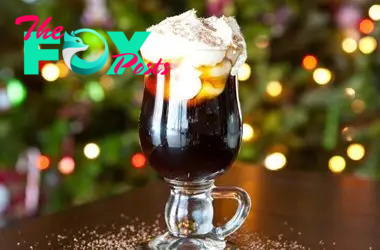
 Entertainment1h ago
Entertainment1h agoAmerica On CoffeeWe’re simply inviting you to take a timeout into the rhythmic ambiance of our breakfast, brunch and/or espresso alternatives. We’re comfortable everytime you cease by.Vacation Espresso Cocktail
-
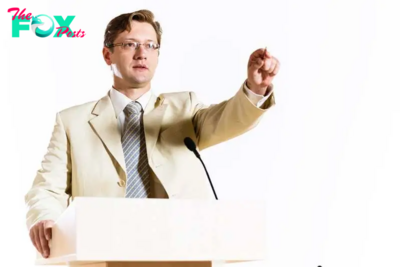
 Entertainment1h ago
Entertainment1h ago12 Methods to Command a Stage
-

 Entertainment2h ago
Entertainment2h agoBeyonce to Headline Halftime Show During NFL Christmas Game
-

 Entertainment3h ago
Entertainment3h agoDid You Correctly Answer This Poughkeepsie Related Jeopardy Question?
-

 Entertainment9h ago
Entertainment9h agoChanges Made in New York to “Men Working” Construction Signs
-
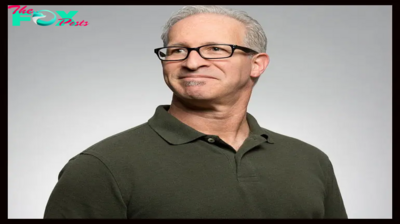
 Entertainment12h ago
Entertainment12h agoSuggestions for delivering a POWERFUL OPENING.
-
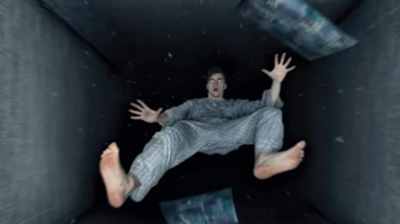
 Entertainment12h ago
Entertainment12h agoAmerica On CoffeeWe’re simply inviting you to take a timeout into the rhythmic ambiance of our breakfast, brunch and/or espresso picks. We’re completely happy everytime you cease by.BAD DREAMS – TEDDY SWIMS
-
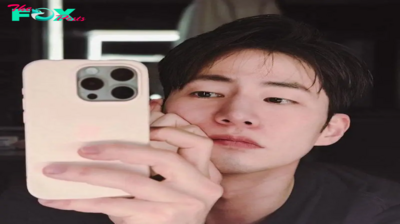
 Entertainment17h ago
Entertainment17h agoRemembering Song Jae-rim: A Look at His Best Movies and K-Drama Performances
